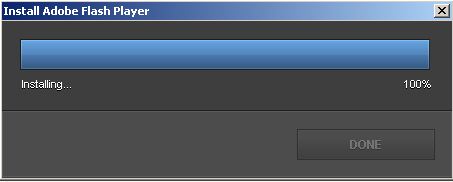
Adobe pushed an emergency update to its ubiquitous Flash player yesterday that closed holes on 6 separate vulnerabilities. Of the 6, 4 were related directly to code execution (CVE-2011-2426, CVE-2011-2427, CVE-2011- 2428, CVE-2011-2430) One revolves around a universal cross-site scripting issue (CVE-2011-2444), and the last vulnerability can lead to information disclosure (CVE-2011-2429).
We recommend that you update all systems immediately. Adobe also states that CVE-2011-2444 relating to cross-site scripting, has reportedly been seen in the wild. The update is available here: UPDATE

What is most interesting to me as a mobile malware researcher is that many of the new Flash vulnerabilities now require an update on Android devices as well. To most computer and smartphone users, it seems Adobe is everywhere, and on almost every device. With this ubiquity, comes the big decision for users between the cost of properly maintaining updated software on multiple devices or unnecessarily exposing one’s data to intrusion risks.
This is the price of dominance with a particular technology. Driving the urgency of proper maintenance is the rule that risk increases exponentially, the more ubiquitous the software is. If you are to compare similar technologies with smaller adoption, such as Sumatra PDF reader, you’ll see a far smaller number of in-the-wild attacks and even exploit code. However, this imbalance does not mean that using obscure software will protect you any better. Many of the vulnerabilities can carry across vendors, and it is very difficult to know which will remain open. Additionally, security through obscurity has never been a successful approach.
What has fallen short is the amount of user education within the mobile user community. I’m still told by people, some of them corporate executives, that they happily open PDF’s, links to sites, and attachments of all kinds on their phones and tablets. It seems that very few people understand that their phone is just one more computer they own now, and is just as susceptible to attacks. While the convenience of being able to access all types of data while on the go is incredibly appealing, it does not come without dangers. In some cases, updates are not applied out of laziness, in other cases applying the updates can break functionality with other applications. In either case a decision must be made between support and security.
The CVE’s mentioned in this update are all related to Flash. Flash can be packaged in multiple formats from websites to PDF’s and Microsoft Word documents, and can even run as a standalone application in some cases.
I would like to remind everyone to update all of your computers, from your desktop, to your laptop, your Mac and even your phones and tablets. While this may seem like a pain in the neck, and a waste of time, it can be far more costly when you are the victim of malware – keep in mind that Adobe is disclosing that they know about attack incidents targeting their own software.
Thanks to Kurt Baumgartner for assistance with this post.




















Adobe’s cost of popularity